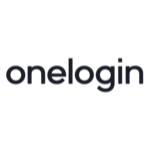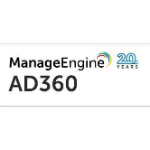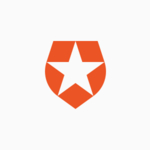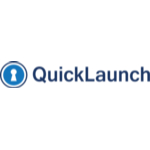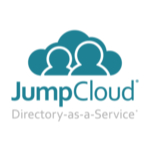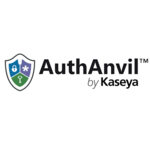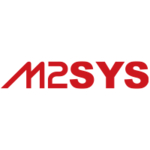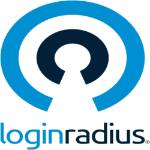TechnologyCounter provides genuine, unbiased real user reviews to help buyers make informed decisions. We may earn a referral fee when you purchase through our links, at no extra cost to you.
List of 15 Best Single Sign On Software
Showing 1 - 15 of 21 productsOkta is a software that helps businesses and organizations manage and secure their users identities in a seamless is a manner. With a user-friendly interface and innovative features, Okta streamlines the authentication process and ensures the protect...Read Okta Reviews
Avatier Identity Anywhere is a identity and access management solution designed for the modern digital landscape. Say goodbye to traditional and tedious IAM processes, and say hello to a seamless, intuitive, and secure way of managing identities acro...Read Avatier Identity Anywhere Reviews
OneLogin, the all-in-one identity and access management platform, simplifies and strengthens your organizations security measures. With a user-friendly interface and robust features, OneLogin streamlines user authentication and authorization processe...Read OneLogin Reviews
ManageEngine AD360 is a dynamic and powerful solution for managing your organizations active directory needs. With its user-friendly interface features, AD360 simplifies user and group management, automates routine tasks, and strengthens security pro...Read ManageEngine AD360 Reviews
Auth0 is a leading identity management platform that simplifies the process of authentication and authorization for web, mobile, and APIs. With its seamless integration, customizable login options, and extensive security measures, Auth0 empowers busi...Read Auth0 Reviews
PingOne - your all-in-one solution for secure is a identity and access management. Designed to simplify the complexities of modern authentication and authorization processes, PingOne offers a seamless and streamlined user experience. With its robust...Read PingOne Reviews
QuickLaunch SSO is a and user-friendly single sign-on solution designed to simplify access to multiple applications and improve productivity. With its advanced features and seamless integration capabilities, QuickLaunch SSO streamlines authentication...Read QuickLaunch SSO Reviews
Rippling - your all-in-one solution for managing your teams human resources. Say goodbye to the hassle of manual paperwork and multiple systems, as Rippling streamlines processes like onboarding, payroll, and benefits administration into one easy-to-...Read Rippling Reviews
Duo Security is a trusted, innovative platform that leverages multi-factor authentication and access management solutions for top-level security. With its user-friendly interface features, Duo Security offers a reliable defense against cyber threats,...Read Duo Security Reviews
JumpCloud DaaS is a cloud-based Directory-as-a-Service platform that offers a secure, efficient, and seamless way to manage user identities, devices, and resources in an organization. With its intuitive interface and robust features, JumpCloud helps...Read JumpCloud DaaS Reviews
AuthAnvil is a security authentication software designed to safeguard your business from cyber threats. With its advanced features and robust technology, AuthAnvil ensures secure access to your data and systems, providing peace of mind and protection...Read AuthAnvil Reviews
Trumba is a event management software designed to simplify and streamline every aspect of event planning. With a user-friendly interface and innovative features, Trumba allows you to effortlessly manage events, promotions, registrations, and more. Sa...Read Trumba Reviews
RightPunch is a workforce management solution that streamlines employee time and attendance tracking. With intuitive features and secure technology, RightPunch simplifies operations and boosts productivity for businesses of all sizes. Say goodbye to...Read RightPunch Reviews
QuestionPro is a and user-friendly online survey and research platform that offers a wide range of tools to help businesses and individuals gather valuable insights. With its user-friendly interface and robust features, QuestionPro simplifies the pro...Read QuestionPro Reviews
LoginRadius is a and user-friendly authentication and identity solution platform that helps businesses of all sizes to securely manage their customer identities and streamline the login process. With its robust features technology, LoginRadius is the...Read LoginRadius Reviews
- What Is Single Sign On Software?
- Top Reasons Why Businesses Need Single Sign On Software?
- What Are the Top Key Features of Single Sign On Software?
- What Are the Top Benefits of Single Sign On Software?
- What Are the Steps to Choose the Right Single Sign On Software?
- What Are the Types of Single Sign On Software for Different Industries?
- What Are the Technology Trends for Best Single Sign On Software?
- What Are the Deployment Options for Single Sign On Software?
What Is Single Sign On Software?
The single sign-on software is a computer program that facilitates users in accessing numerous apps by utilizing a single set of credentials. Typically, the authentication mechanisms employed involve the utilization of either a combination of login and password or a digital certificate.
This feature enhances the security and efficiency of the user experience by eliminating the necessity of recalling multiple authentication credentials. In contrast, the user will be required to authenticate themselves once using the specified credentials, thereafter gaining access to all the applications for which they possess authorization.
Moreover, the implementation of single sign-on platforms decreases the likelihood of security breaches by consolidating user authentication into a single set of credentials, as opposed to requiring several sets for various applications. This facilitates the task of user access management for the administrator.
For instance, in the event that a user experiences a loss of access to an application, they have the convenience of promptly revoking their access instead of having to undertake the task of resetting numerous usernames and passwords.
Top Reasons Why Businesses Need Single Sign On Software?
1. Improved Security: single sign-on platforms has the capability to employ robust authentication protocols, such as two-factor authentication or biometric authorisation, in order to mitigate the potential threat of illegal access.
2. Increased Efficiency: The implementation of single sign-on SSO software effectively minimizes the temporal and cognitive resources required by users to authenticate themselves across many apps.
Consequently, this streamlined process enables users to allocate their time and mental efforts towards more complex and advanced undertakings.
3. Simplified User Provisioning: The implementation of single sign-on streamlines the process of granting new users appropriate access to various apps and resources, resulting in time and resource conservation.
4. Reduced Password Management Headaches: single sign-on SSO software enables users to utilize a unified login credential across multiple applications, thereby obviating the necessity to memorize numerous distinct passwords.
5. Improved User Experiences: By implementing measures to minimize the need for repetitive logins and enhancing the overall user experience, individuals will likely enjoy increased productivity and satisfaction levels.
6. Consistent Security across Applications: By implementing a single sign-on system, administrators have the ability to efficiently and conveniently modify security configurations for all apps, thereby mitigating the potential hazards associated with the exposure of user data.
7. Increased Support Savings: As customers gain increased familiarity with the implementation of single sign-on (SSO), it is anticipated that support teams will be empowered to deliver expedited and enhanced assistance in response to user inquiries.
8. Improved User Access: Single sign-on (SSO) enables users to securely access applications from any device, regardless of their location or time of access.
9. Simpler SSO Auditing: The implementation of single sign-on (SSO) facilitates the streamlining of user access audits, hence enhancing the ability to enforce adherence to security regulations.
10. Easier Compliance Preparation: The implementation of single sign-on facilitates the streamlined process by which firms can assess and modify the access privileges of their employees in order to meet compliance obligations.
11. Reduced IT Administrative Tasks: single sign-on SSO software is an authentication mechanism that centralizes the process of verifying user identities, thereby diminishing the necessity for manual supervision and control of user access operations.
12. Integrated Identity Management: The integration of single sign-on with a comprehensive identity management suite enables enterprises to effectively administer user accounts and their associated privileges and authorizations throughout the whole organization.
13. Maximum Hardware Compatibility: Businesses can assure compatibility of their hardware by utilizing single sign-on programs, which often offer support for many device kinds and operating systems.
14. Cross-Application Integration: Single sign-on (SSO) tools provide the capability to seamlessly connect with a diverse range of solutions and services, hence mitigating the necessity for users to engage in several independent sign-in processes.
15. Future-Proofed: The continuous evolution of the best single sign-on software ensures that businesses are equipped to mitigate emerging security risks and comply with increasing regulatory requirements, thereby enhancing their future-proofing capabilities.
What Are the Top Key Features of Single Sign On Software?
The top key features of single sign-on software are:
1. Centralized Identity Management: The implementation of the best single sign-on software facilitates the consolidation of user identity management, hence enabling administrators to efficiently perform tasks such as user profile creation, modification, and deletion through a unified interface.
This approach streamlines the security process by eliminating the need for consumers to recall several passwords.
2. Multi-factor Authentication: The best SSO software enables administrators to setup multi-factor authentication (MFA), hence enhancing the security measures for accessing diverse services.
Various approaches can be employed, including the use of Personal Identification Number (PIN) numbers, biometric scanning techniques, or geolocation technology.
3. Access Management: The utilization of single sign-on software streamlines the task of giving and revoking user access credentials by automating access management procedures.
4. Audit Logs: The utilization of single sign-on software facilitates the monitoring of user activity and the generation of comprehensive audit records. This aids administrators in promptly identifying and addressing any atypical or malevolent actions.
5. Compliance Monitoring: The utilization of single sign-on software enables administrators to effectively oversee user access, thereby ensuring that all activities are in adherence to regulatory obligations.
6. Self-service Password Reset: The use of a single sign-on solution facilitates the convenient process of password reset for users who have forgotten their login credentials. This practice results in time efficiency and enhances user convenience.
7. Integration with Applications: The integration of single sign-on software with pre-existing applications enables users to conveniently access their programs and services through a unified sign-on process.
8. Mobile Support: Mobile support is a feature offered by single sign-on solutions, enabling users to securely access their accounts from any location and using any device.
9. Enhanced Security: The implementation of single sign-on software serves to enhance security measures and safeguard user accounts by incorporating supplementary authentication techniques, such time-based one-time passwords and two-factor authentication.
What Are the Top Benefits of Single Sign On Software?
1. Increased Security: The implementation of single sign-on software mitigates the potential for illegal access by reducing the necessity for multiple passwords, while concurrently upholding robust security protocols.
2. Enhanced User Experience: The utilization of single sign-on software streamlines the process of user authentication by enabling individuals to employ a single set of credentials for accessing all of their apps.
3. Increased Efficiency: The implementation of single sign-on software reduces the temporal investment required by users to authenticate and deauthenticate from various apps, hence facilitating expedient and effortless access to pertinent data.
4. Reduced Costs: The implementation of single sign-on software effectively mitigates the administrative burden associated with user administration by eliminating the necessity for various passwords and accounts.
5. Improved Compliance: The implementation of the best single sign-on software enables enterprises to effectively adhere to data security compliance standards by implementing robust authentication and access control protocols across their whole suite of apps.
6. Unified Identity: The best SSO software facilitates the attainment of a cohesive user identity within businesses by enabling the utilization of a singular set of authentication credentials across all applications.
7. Time Savings: The implementation of top single sign-on software obviates the necessity for users to repeatedly authenticate themselves across several apps, hence resulting in time savings and enhanced overall productivity.
What Are the Steps to Choose the Right Single Sign On Software?
1. Evaluate your organization’s needs: Before making a decision on which single sign-on software to choose, it is imperative to thoroughly assess and analyze the specific demands and requirements of your firm.
When evaluating the appropriateness of your organization, it is essential to take into account factors such as its scale, user requirements, and the number of user accounts and apps that necessitate assistance.
2. Determine the authentication methods: The best SSO software encompasses a diverse range of authentication techniques, including but not limited to user name and password, biometrics, and token-based authentication.
The objective is to ascertain the available authentication mechanisms and their compatibility with the applications and systems intended for integration.
3. Research available options: Perform an extensive investigation of the already existing single sign-on software solutions inside the contemporary market. The task at hand involves the identification of solutions that align with the specified requirements, followed by a comprehensive comparison of features, pricing, and availability among several providers.
4. Test and evaluate: Conduct a comprehensive examination and assessment of several top single sign-on software alternatives in order to ascertain their compatibility with your specified criteria.
Request the provision of complimentary trial periods in order to assess the software's functionality and engage with the support personnel, hence enhancing comprehension of the various features offered.
5. Finalize your selection: Once the evaluation of the various single sign-on software choices has been conducted, proceed to finalize your choice. Before reaching a conclusive conclusion, it is advisable to take into account factors such as pricing, implementation feasibility, and user experience.
What Are the Types of Single Sign On Software for Different Industries?
Single sign-on software can be broadly classified into three main categories: industry-specific, generic, and cloud-based solutions.
1. Industry-specific SSO software is tailored to address the unique security and usability requirements of specific sectors, such as healthcare or finance.
The software incorporates specific functionalities that are customized to meet the specific needs of the business, such as implementing more rigorous authentication protocols or employing specialized data encryption techniques.
2. Generic single sign-on platforms refer to commercially available software packages that are specifically built to offer fundamental single sign-on functionalities across many business and consumer applications and services.
3. Cloud-based single sign-on SSO software are dedicated platforms that offer the functionality of single sign-on as an integral component of their comprehensive range of cloud-based services. Typically, these solutions are rendered in the form of a service, offering advantages such as access control, identity management, and compliance management.
What Are the Technology Trends for Best Single Sign On Software?
The current technology advances in the realm of the best single sign-on software mostly revolve around enhancing the security, efficiency, and user experience of the sign-on procedure.
The utilization of single sign-on software mitigates the potential hazards associated with the practice of password reuse, while simultaneously offering consumers a streamlined and efficient means of accessing many apps through a solitary authentication procedure.
Companies are endeavoring to enhance the security of single sign-on systems by incorporating supplementary authentication measures, such as two-factor authentication or biometric verification. Technological advancements, such as machine learning, contribute to the identification of potentially malicious behavior and unauthorized intrusion attempts.
Furthermore, the implementation of single sign-on can be expanded to facilitate uninterrupted accessibility across diverse contexts, including mobile devices and various platforms.
Numerous single sign-on SSO software are concurrently prioritizing the enhancement of user experience by incorporating features such as multi-factor authentication, which includes the utilization of easily memorable passwords, as well as the implementation of a streamlined user interface.
These technologies are facilitating the development of a more secure and fast single sign-on process that offers convenience to users.
What Are the Deployment Options for Single Sign On Software?
The deployment choices for the best SSO software include both on-premise and cloud-based alternatives.
1. The deployment of on-premise single sign-on platforms entails the hosting of the SSO solution within the internal server architecture of an organization, whether physical or virtual. This strategy affords the firm complete autonomy in managing its security, data, and authentication procedures.
Nevertheless, the successful implementation of this system necessitates a heightened degree of technical oversight, encompassing tasks such as regular upgrades, ongoing maintenance, and vigilant monitoring.
2. Cloud-based single sign-on SSO software deployment involves the utilization of cloud-based services, such as Microsoft Azure or Google Cloud Platform, for the purpose of hosting SSO solutions in a cloud environment.
This strategy offers enhanced scalability, flexibility, cost-effectiveness, and improved reliability compared to on-premise single sign-on platforms implementations, while also requiring less technical management. Additionally, it guarantees the continuous maintenance and updating of the SSO solution without requiring manual intervention or oversight from the business.


